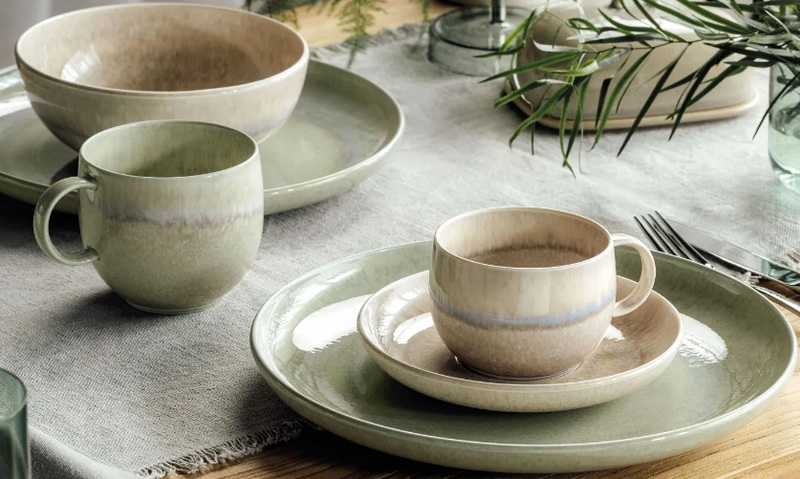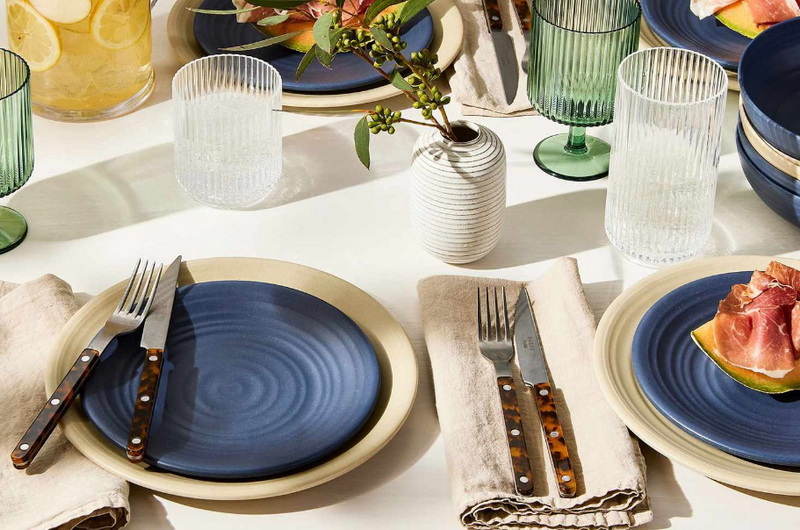
Content Menu
● Introduction to Disposable Tableware
>> Types of Disposable Tableware
● Ensuring Quality in Disposable Tableware
>> Raw Material Selection
>> Production Process Control
>> Packaging and Shipping
>> Certifications and Compliance
● Challenges and Innovations
>> Environmental Impact
>> Sustainable Practices
● Innovations in Biodegradable Materials
>> Plant-Based Bioplastics
>> Mushroom-Based Packaging
● Consumer Awareness and Preferences
>> Impact of Consumer Preferences
>> Marketing Strategies
● Role of Technology in Quality Assurance
>> Advanced Manufacturing Technologies
>> Quality Control Systems
● Conclusion
● FAQs
>> 1. What Certifications Are Essential for Disposable Tableware Makers?
>> 2. How Do Disposable Tableware Makers Ensure Environmental Sustainability?
>> 3. What Are the Key Materials Used in Biodegradable Disposable Tableware?
>> 4. How Do Manufacturers Ensure the Hygiene and Safety of Disposable Tableware?
>> 5. What Are the Benefits of Using Eco-Friendly Disposable Tableware?
● Citations:
Disposable tableware has become an integral part of modern life, offering convenience and ease of use in various settings, from casual gatherings to large-scale events. However, ensuring the quality of these products is crucial for both consumer safety and environmental sustainability. In this article, we will delve into the processes and standards that disposable tableware makers adhere to in order to guarantee the quality of their products.

Introduction to Disposable Tableware
Disposable tableware includes a wide range of products such as plates, cups, cutlery, and bowls, made from materials like plastic, paper, bamboo, and bioplastics. The choice of material often depends on the intended use, environmental considerations, and cost factors.
Types of Disposable Tableware
1. Plastic Disposable Tableware: Commonly made from polypropylene (PP) or polystyrene (PS), these products are lightweight and inexpensive but have faced criticism due to environmental concerns.
Plastic disposable tableware is widely used due to its affordability and durability. However, its non-biodegradable nature contributes significantly to plastic waste and pollution.
2. Paper Disposable Tableware: Made from paper pulp, these products are biodegradable and compostable, offering a more eco-friendly alternative.
Paper disposable tableware is gaining popularity as consumers become more environmentally conscious. It is often used in casual dining settings and outdoor events.
3. Biodegradable Disposable Tableware: Often made from materials like sugarcane bagasse, bamboo, or cornstarch, these products are designed to break down naturally in the environment.
Biodegradable tableware is becoming increasingly popular as it aligns with the growing demand for sustainable products. These materials are renewable and can reduce the environmental impact associated with traditional plastics.
Ensuring Quality in Disposable Tableware
Ensuring the quality of disposable tableware involves several key steps:
Raw Material Selection
Disposable tableware makers must select raw materials that meet strict hygiene and safety standards. For example, food-grade plastics like PP and PS are commonly used for plastic tableware, while biodegradable materials such as sugarcane bagasse and bamboo are preferred for eco-friendly options.
The quality of raw materials directly affects the performance and safety of the final product. Therefore, manufacturers must source materials from reputable suppliers and conduct regular quality checks.
Production Process Control
Manufacturers must implement a sound production management system to ensure that all equipment and environments meet health and safety standards. This includes adhering to standard operating procedures to prevent cross-contamination and ensure product integrity.
Production facilities should be well-maintained, with regular cleaning and sanitation protocols in place. Employees should be trained on quality control measures to identify and address any defects during production.
Packaging and Shipping
Effective packaging is crucial to prevent contamination and damage during transportation. Packaging materials should be food-grade and well-sealed to maintain product hygiene.
Packaging should also be designed with sustainability in mind, using minimal materials and ensuring that all components are recyclable or biodegradable.
Certifications and Compliance
Disposable tableware makers must obtain relevant certifications to ensure their products meet quality, safety, and environmental standards. Key certifications include ISO 9001 for quality management, FDA approval for food safety in the U.S., and BPI certification for biodegradability.
These certifications not only ensure compliance with regulatory requirements but also enhance consumer trust and confidence in the products.
Challenges and Innovations
Despite the advancements in disposable tableware, challenges persist, particularly regarding environmental impact. Innovations in biodegradable materials and sustainable manufacturing processes are addressing these concerns.
Environmental Impact
While traditional plastic tableware contributes significantly to pollution, biodegradable alternatives offer a greener solution. However, these products are often more expensive and may require specific composting conditions to decompose effectively.
Manufacturers are working to develop more affordable and efficient biodegradable materials that can easily decompose in various environments.
Sustainable Practices
Disposable tableware makers are increasingly adopting sustainable practices, such as using recycled materials, reducing waste, and implementing eco-friendly packaging solutions.
Sustainable practices not only reduce environmental impact but also contribute to cost savings and improved brand reputation.

Innovations in Biodegradable Materials
Recent innovations in biodegradable materials have led to the development of more efficient and affordable alternatives to traditional plastics. For example, plant-based bioplastics and mushroom-based packaging are gaining attention for their potential to replace non-biodegradable materials.
Plant-Based Bioplastics
Plant-based bioplastics are made from renewable biomass sources such as corn starch, sugarcane, or potato starch. These materials are biodegradable and can be composted, reducing the reliance on fossil fuels and minimizing environmental impact.
Mushroom-Based Packaging
Mushroom-based packaging uses mycelium, the root structure of mushrooms, to create biodegradable packaging materials. This innovative approach offers a sustainable alternative to traditional packaging materials and can be composted at home.
Consumer Awareness and Preferences
Consumer awareness about environmental issues is driving demand for sustainable disposable tableware. As consumers become more environmentally conscious, they are seeking products that not only meet their needs but also align with their values.
Impact of Consumer Preferences
The shift towards sustainable products has significant implications for disposable tableware makers. Manufacturers must adapt to changing consumer preferences by investing in research and development of eco-friendly materials and processes.
Marketing Strategies
Disposable tableware makers are adopting marketing strategies that highlight the environmental benefits of their products. This includes labeling products as "biodegradable" or "compostable" and emphasizing the use of sustainable materials.
By focusing on sustainability, manufacturers can differentiate their products and appeal to environmentally conscious consumers.
Role of Technology in Quality Assurance
Technology plays a crucial role in ensuring the quality of disposable tableware. Advanced manufacturing technologies can improve production efficiency and consistency, while quality control systems help detect defects early in the production process.
Advanced Manufacturing Technologies
Technologies like 3D printing and automation are being explored for their potential to enhance production efficiency and reduce waste. These technologies can also help in creating complex designs and shapes that are difficult to achieve with traditional manufacturing methods.
Quality Control Systems
Quality control systems involve the use of sensors and software to monitor production lines and detect any deviations from quality standards. This ensures that only high-quality products reach the market, enhancing consumer satisfaction and brand reputation.
Conclusion
Ensuring the quality of disposable tableware is a multifaceted process that involves careful material selection, rigorous production control, and adherence to strict certifications and standards. As consumer demand for sustainable products grows, disposable tableware makers are innovating to provide eco-friendly options that meet both quality and environmental criteria.

FAQs
1. What Certifications Are Essential for Disposable Tableware Makers?
Disposable tableware makers should obtain certifications like ISO 9001 for quality management, FDA approval for food safety, and BPI certification for biodegradability to ensure their products meet international standards.
2. How Do Disposable Tableware Makers Ensure Environmental Sustainability?
Disposable tableware makers ensure environmental sustainability by using biodegradable materials, implementing sustainable manufacturing processes, and promoting eco-friendly packaging solutions.
3. What Are the Key Materials Used in Biodegradable Disposable Tableware?
Biodegradable disposable tableware is often made from materials such as sugarcane bagasse, bamboo, cornstarch, and palm leaves, which are renewable and can decompose naturally.
4. How Do Manufacturers Ensure the Hygiene and Safety of Disposable Tableware?
Manufacturers ensure hygiene and safety by selecting high-quality raw materials, maintaining strict production controls, and using food-grade packaging materials to prevent contamination.
5. What Are the Benefits of Using Eco-Friendly Disposable Tableware?
Eco-friendly disposable tableware offers several benefits, including reduced environmental impact, compliance with sustainability standards, and enhanced consumer perception of businesses that adopt these products.
Citations:
[1] https://www.cnnbcy.com/news/industry-news/how-to-ensure-the-hygiene-and-safety-of-plastic-disposable-dinnerware.html
[2] https://wonbonwood.com/best-practices-importing-tableware/
[3] https://www.freepik.com/free-photos-vectors/disposable-tableware
[4] https://www.youtube.com/watch?v=UA7FypTFxRg
[5] https://insights.made-in-china.com/Understanding-Disposable-Tableware-Sourcing-Consumer-Needs-Selection-Guide_ATRGtmXbzElQ.html
[6] https://www.innaturepack.com/questions-biodegradable-disposable-tableware-molded-pulp/
[7] https://m.greenwoodcutlery.com/n1887827/Manufacturing-Process-of-Disposable-Wooden-Tableware.htm
[8] https://www.nbnqc.com/inspection-and-testing-protocols-for-disposable-biodegradable-cutlery/
[9] https://www.ecoleafproducts.co.uk/pages/disposable-plates-questions
[10] https://www.bioleaderpack.com/biodegradable-tableware-detailed-questions-and-answers/
[11] https://www.panabam.com/certifications-and-standards-for-disposable-tableware-a-comprehensive-guide/
[12] https://www.mountain-bio.com/factory/quality-control
[13] https://disposablesinc.com/our-services/quality-controls-for-products
[14] https://easypacktw.com/blog/we-are-strict-about-quality-and-conduct-the-necessary-tests-throughout-the-manufacturing-process/
[15] https://www.hiplastics.com/quality-control.html
[16] https://www.anchenggy.com/blog/must-ask-questions-for-your-disposable-tableware-supplier.html
[17] https://getbiopak.com/the-importance-of-quality-control-in-paper-cup-manufacturing/
[18] https://www.anchenggy.com/blog/recognize-disposable-flatware-quality.html
[19] https://www.anchenggy.com/blog/disposable-tableware-certifications-and-standards.html
[20] https://eventableware.com/a-complete-guide-disposable-plates/
[21] https://www.imarcgroup.com/biodegradable-disposable-tableware-manufacturing-plant-project-report
[22] https://www.mdpi.com/2071-1050/17/4/1434
[23] https://www.niir.org/blog/sustainability-business-spotlight-kraft-paper-disposable-tableware-carton-boxes-electrolytic-manganese-dioxide-and-curcumin-extraction/
[24] https://www.shutterstock.com/search/disposable-plates-dirty?page=4
[25] https://www.istockphoto.com/photos/disposable-plates
[26] https://www.youtube.com/watch?v=RpYF_DbewwM
[27] https://create.vista.com/photos/qms/
[28] https://www.vecteezy.com/free-photos/disposable-items
[29] https://www.youtube.com/watch?v=14wX5dW5cGk
[30] https://www.shutterstock.com/search/disposable
[31] https://www.youtube.com/watch?v=V-qwQ4nb8Ic
[32] https://www.shutterstock.com/search/disposable-plastic-bowl
[33] https://www.youtube.com/shorts/4hU16x-kxug
[34] https://www.anchenggy.com/blog/disposable-cutlery-materials.html
[35] https://www.shutterstock.com/video/search/disposable-paper-plate

















